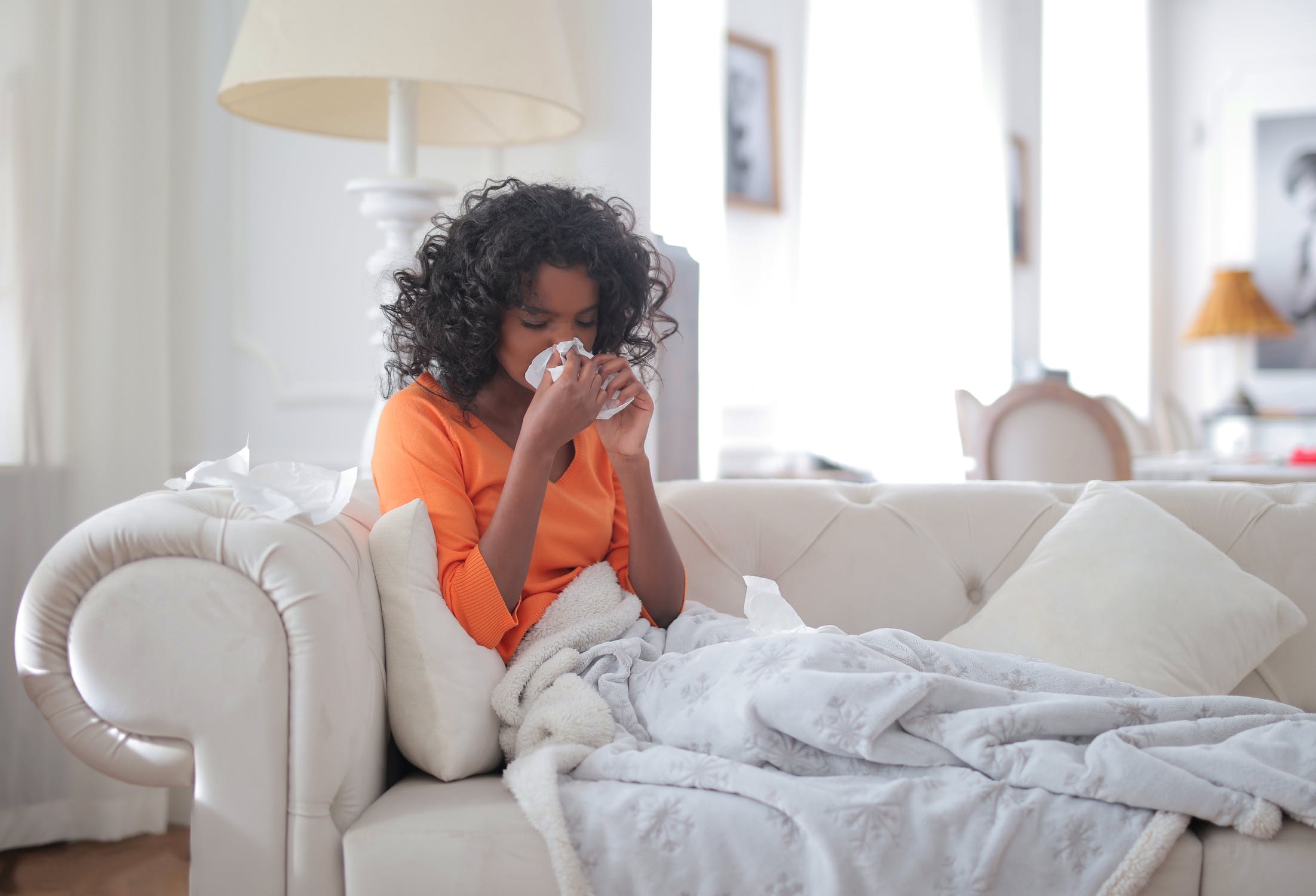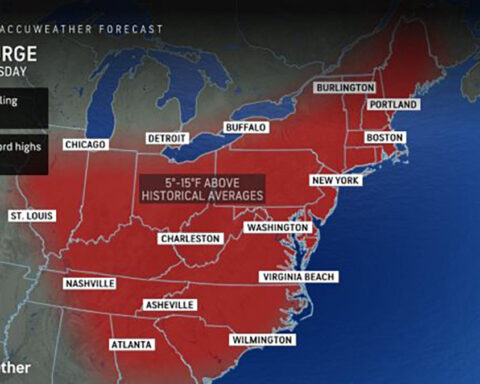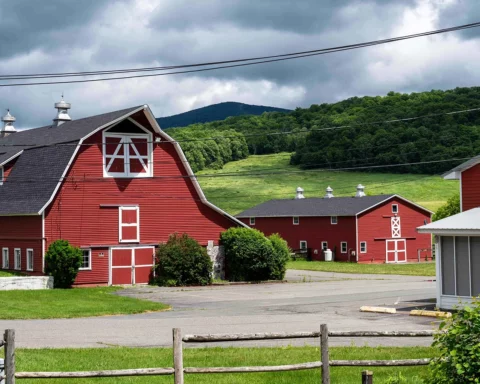By Lesly Gregory
A version of this article first appeared at Rent.com.
Over 50 million Americans experience some type of allergy each year. For those with outdoor allergies, common symptoms include stuffy noses, runny eyes and a lot of sneezing. Common triggers for seasonal allergies include pollen from trees, grass or even weeds and mold.
Where you live can also impact your allergies since not every city produces the same types or amounts of allergens. How does your city stack up?
What are the worst cities for allergy sufferers?
While everyone may think their city is the worst when it comes to allergies, it’s not always the case.
We’ve grabbed the 10 worst cities for allergy sufferers according to the Asthma and Allergy Foundation of America. If you live in any of these, keep your antihistamine handy. Spring is almost here.
10. Bridgeport, CT

About 60 miles from Manhattan, Bridgeport can come as a breath of fresh air anytime during the year except for the spring. With tree pollen allergies at an all-time high, Bridgeport takes the No. 10 spot in our worst cities for allergies.
Don’t fret as you’re not necessarily house-bound during this time. Bridgeport has you covered with some quirky (and indoor) gems like the Zaffis Museum of the Paranormal or the Downtown Cabaret Theatre.
Living in a one-bedroom in Bridgeport averages around $1,408 in monthly rent.
9. Oklahoma City, OK

Alerts of high tree pollen are a daily, spring season occurrence in Oklahoma City.
It’s not the place to forget to take your allergy meds each day. Once you’ve done that, head out to the arts complex, Factory Obscura, for a unique, immersive experience.
As the day closes and the air quality improves, hop on a water taxi and play tourist with a trip around the city.
One-bedroom apartments average $758 a month in Oklahoma City.
8. New Haven, CT

Home to Yale University, New Haven is a city best experienced from the outside.
Grab a small box of tissues, take an allergy pill and brave the spring air to wander through the city’s Little Italy or take a nostalgic ride on the carousel at Lighthouse Point Park. You can even visit the alleged birthplace of the hamburger at Louis’ Lunch.
New Haven’s lush trees and humidity bring high numbers of tree pollen and mold every spring to its residents, who pay $2,154 a month, on average. for a one-bedroom apartment.
7. Springfield, MA

Springfield combines the perfect storm of bad air quality and allergens, thanks to its location in a valley. This makes things miserable for allergy sufferers.
To escape the higher-than-average pollen counts head to The Amazing World of Dr. Seuss Museum. This whimsical stop pays homage to the local writer behind the colorful books. You’ll find so much to explore inside of it, including murals and Theodor Geisel’s studio.
Folks in Springfield rent a one-bedroom for $1,293 a month on average.
6. Hartford, CT

Stay away from the yellow dust and avoid the sneezes in Hartford by exploring its architectural points of interest.
The Wadsworth Atheneum Museum of Art is not only a free art museum, but the building itself is a sight to behold.
If art isn’t your thing, dip your toes into some science at the Connecticut Science Center. There are more than 165 hands-on exhibits to occupy your time.
Refuel with a lobster roll from J’s Crab Shack, a fish market-restaurant. The seafood there is as fresh as it gets. Hopefully, you’ll enjoy it without an itchy nose. Then, head home, where a one-bedroom is $1,520 per month, on average.
5. Pittsburgh, PA

Seasonal allergies settle in after the rain in Pittsburgh. All the precipitation brings a spike in tree pollen and mold allergens. If you live here, watch out for those April showers and consider staying in indoors.
Pittsburgh has plenty to offer during a time when staying indoors feels better, despite the warming weather outside. Skip the botanical garden for now and head to the Andy Warhol Museum or the Heinz History Center.
Afterward slurp down some fresh oysters at the historic Original Oyster House, which opened in 1870.
Wind down after a full day at your one-bedroom apartment, currently averaging $1,563 a month.
4. McAllen, TX

McAllen is no stranger to the worst cities for allergies list; it has seen the top 10 for years. Unfortunately, itchy, red eyes are a staple during McAllen’s spring season. The city’s many trails and outdoor spaces are lush with trees that provide lovely shade, but also contribute to the high pollen count.
Luckily, the International Museum of Art & Science has a beautiful collection of Mexican and Latin American folk art, virtual exhibitions and more. When your belly starts to rumble, don’t miss the tortes at Las Rocas. You can even drive through to enjoy this authentic cuisine, which has been a city staple for more than 20 years.
By then, you’ll feel ready for a rest, so head to your one-bedroom apartment, where rent averages out at $739 per month.
3. Wichita, KS

A newcomer to the top 10 worst cities for allergy sufferers, it’s the pollen in Wichita that will get you. Various trees, grasses and weeds let their pollen loose all spring, but it’s the local winds that carry the allergens about.
Since it’s hard to avoid flying pollen, best to keep indoors during the spring. Fill the hours at the Old Cowtown Museum or the Museum of World Treasures. Nothing like a building out of the Old West or some ancient artifacts to occupy your time. When home starts calling your name, you’ll find rent for a one-bedroom costs you about $850 on average each month.
2. Richmond, VA

April and May are particularly severe for Richmond residents with seasonal allergies. Grass and tree pollen are the worst culprits, forcing people indoors just as the weather begins warming up.
The city’s historical past and enclosed activities can keep you occupied while you hide out from the pollen. Plan visits to Virginia Museum of Fine Arts, the Edgar Allan Poe Museum and The American Civil War Museum. Enjoy these, then head home to your one-bedroom apartment which will cost you, on average, $1,190 a month.
1. Scranton, PA

The small city of Scranton rose in popularity once the American version of “The Office” put it on the map. Unfortunately, it also tops the list of the worst cities for allergy sufferers.
You might want to prioritize the indoor sights by visiting The Electric City Trolley Museum and the Electric City Aquarium and Reptile Den. Both places pay homage to Scranton’s nickname, earned when electric lights were first introduced, right here, in 1880.
If you don’t mind some sneezing, Scranton’s one-bedroom apartments go for $1,241 a month on average.
The best cities for allergies
The majority of the worst cities for allergy sufferers cluster on the east coast, but you’ll find many of the best cities for allergies in the west. In fact, of the 10 cities where people suffer from allergies the least, only one is on the east coast, Durham, NC.
Most of the rest cluster in California and Utah, with cities like Fresno, Stockton, San Jose, Salt Lake City and Provo.
You’ll also find low-allergen cities in Colorado, Oregon, Wisconsin and Washington state as well.
Potential reasons why you’ll see fewer allergens in these cities include their location, the climate and their altitude. West coast cities have the added benefit of an ocean breeze that may help blow allergens away. Dry and sunny cities mean there’s less chance of mold and dust. There’s even less water to enable pollen-generating plants to grow. We also know that pollen counts are generally lower at higher altitudes, so inland cities, above sea level may cause fewer sneezes.
Although all of these cities do have triggers for allergy sufferers, the fact that the risk is much less may make them worth considering if you can’t take the east coast spring any longer.
Tips for managing your allergies
No matter where you live, suffering from allergies does not mean the end of the world. These allergy tips won’t get rid of your symptoms indefinitely but can help make everything more bearable without having to sacrifice a little outside time this spring.
Go outside at the right time
It’s okay to have a little outside time while you’re suffering from allergies, but you should limit it just to be safe:
- On days when it’s hot, dry and windy, pollen counts are often higher, so stay inside.
- During cool, damp or rainy days, pollen gets pushed out of the air and onto the ground. That means you’ll breathe in less and can enjoy some outside time without suffering.
- On sunny days, skip outside time in the morning. Pollen counts are often highest between 5-10 a.m.
Keep pollen out of your house
The worst thing to experience is an allergy attack indoors when you know all the allergens belong outside. This means keeping pollen and whatever else you’re allergic to out of your home. Do this by making sure windows stay closed during allergy season.
When you do come in from outside, remove your shoes and leave them by the door. If you can, change clothes as well and take a quick rinse-off in the shower. Removing all the pollen from your body means you won’t track it through your apartment.
Additionally, try to rinse your hair at the end of each day to prevent pollen from settling on your pillow at night.
Take medication
It’s not uncommon for allergy sufferers to need the help of over-the-counter medication to get through the season. The trick is to start taking medication early. If you know about when you start experiencing allergy symptoms each year, begin taking allergy pills at least a week before. This allows the medication to build up in your system before you actually need it, lessening symptoms from the very start.
You should also take your allergy pill at around the same time every day, not stopping until allergy season is over.
If you need a little something extra to battle allergy symptoms, try a nasal spray. Medicated sprays can help reduce nasal inflammation and swelling, so it’s easier to breathe. Saline sprays will keep your nose moisturized and help loosen congestion. Both are okay to use in conjunction with an allergy pill.
Manage your allergies no matter where you live
Whether home is one of the worst cities for allergies or one of the best, don’t ignore that seasonal stuffy nose. Use our allergy tips, or find what works best for you, to breathe easy as the flowers bloom and the pollen starts flying.









